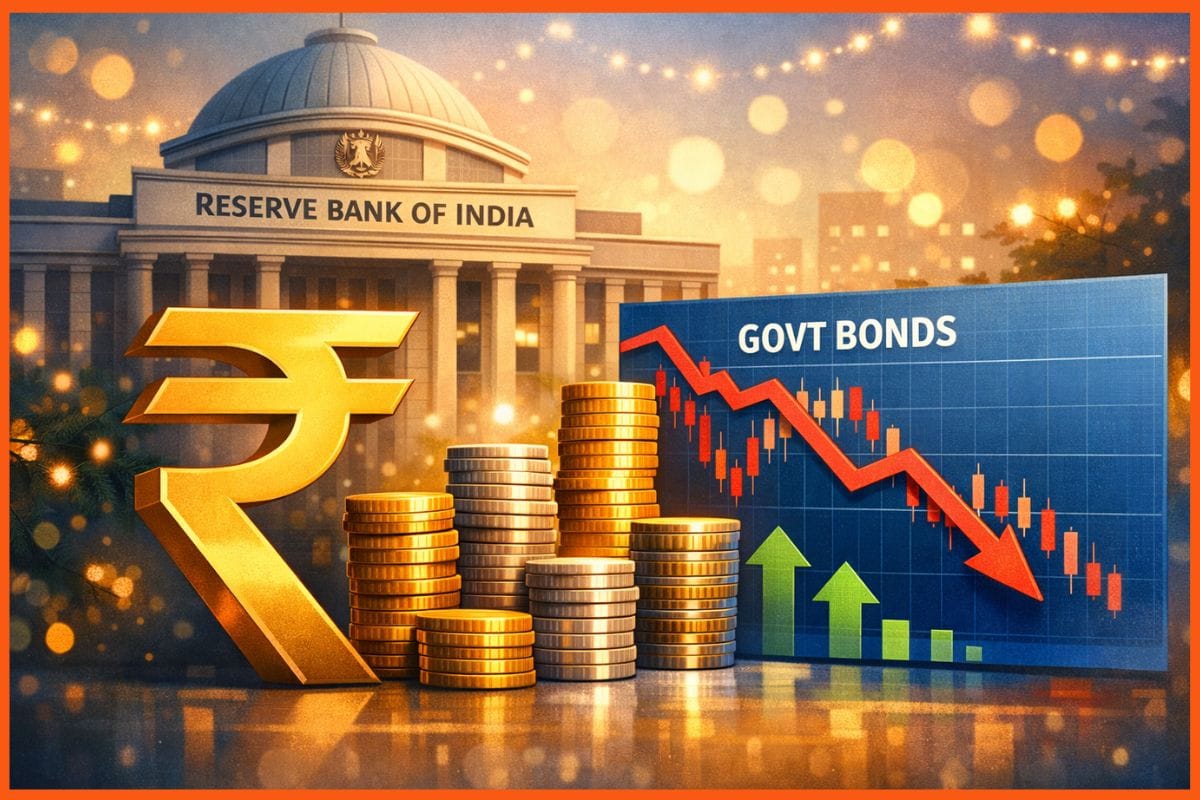What is ONDC? How will ONDC Impact the Ecommerce Industry of India?
🔍Insights
Open Network for Digital Commerce (ONDC) was formed on 31st December 2021. However, the initial pilot phase of this program was launched on 29th April 2022. The target behind the introduction of this platform in India is to bring scalability and accessibility to the field of e-commerce.
The initial idea of ONDC came from the Piyush Goyal-led Department for Promotion of Industry and Internal Trade (DPIIT).
The project is moving forward under the leadership of T Koshy (CEO), who was a former partner at the consulting firm EY, along with a 9-member advisory council that consists of names like Nandan Nilekani, the co-founder of software powerhouse Infosys Ltd, National Health Authority’s RS Sharma and more.
It is aimed to provide equal opportunity to the small retailers and merchants in the e-commerce market alongside big players like Amazon and Flipkart.
Nilekani has also earlier helped the Indian government in developing Aadhar biometric ID system. As per him, ONDC is meant to democratize digital commerce in India.
As per a survey, India in 2021 had around 289.1 million digital buyers. This number is expected to increase and reach around 377.6 million in 2025.

To date, the maximum share of eCommerce in India is in the hands of a few big companies. However, the growing number of buyers invokes the need of including small sellers from remote places to become a part of this huge market.
To help resolve this issue with the aim of bringing more retailers and sellers online government brought forward the concept of Open Network for Digital Commerce (ONDC).
What is ONDC?
UPI and ONDC | What's the Difference?
Why is ONDC needed?
How will ONDC impact the e-commerce industry in India?
ONDC Funding
Tracing the Growth of ONDC
ONDC Challenges
What is ONDC?

Before understanding how the government will implement this and what are its benefits, let us first understand clearly what ONDC is.
Until now, digital commerce across India is abiding by the platform-centric model. This means there are different platforms available online through which a seller can sell his product and a buyer can purchase them by registering on the same platform.
This means that the buyer and seller have to be on the same platform for an online deal to occur.
The idea behind ONDC is to bring e-commerce to the open network model instead of the platform-centric model. This will make e-commerce approachable for all types of buyers and sellers.
The idea is to bring the buyers and sellers from different platforms into each other’s approach without any of them having to register on the platform on which the other exists.
It will allow the buyers and sellers from different platforms to connect with each other, provided that both the platforms are linked to ONDC. This is similar to the role UPI plays in terms of transactions. UPI is a fitting example of the concept that ONDC is working on. This is because where UPI united the banking partners and the merchants/users, via a single unified platform connected through the mobile number, ONDC is pivoting on a similar concept that will unite the buyers, sellers, logistics providers aggregators, payment gateways, and more on a single platform, which will make buying and selling easier for everyone in the ecosystem.
Therefore, the ONDC network allows the buyer to connect with the seller and make transactions to settle the deal irrespective of which applications they are using for buying or selling the products.
UPI and ONDC | What's the Difference?
Often during the ideation and the development of the ONDC product, we have heard people, businesses, and media placing ONDC and UPI systems side by side. While both the systems are based on a similar idea, which is to link people and make things in the Indian market easier, they are poles apart really in terms of the functionality, complexity, magnitude, people, segments and markets involved, and more.
For example, the UPI system was involved in the secure transfer of finances, the main objective of which was to facilitate the transfer of funds, and keep the same secure between banks, merchants and customers. However, when it comes to ONDC, the concept of ONDC does not involve a direct transfer of goods and services but is related to the same.
Besides, ONDC also has a list of subjective variables, which the UPI doesn't have. For instance, ONDC has to look after the quality of the products being sold, onboarding sellers and shops, making the communication between them easier, overlook the reliability of both the sellers and the buyers, looking after the speed of delivery and more.
Also, when it comes to the UPI system, nothing was dependent on physical interaction, which stands in sharp contrast to the ONDC system, where the latter is significantly dependent on the offline steps after the matchmaking is done online.
Why is ONDC needed?
Presently, if a retailer or merchant wishes to take his business online, there are only two options available for them.
The first option is to create its own website. This might require some technical support. Further, this is a cost-intensive process as it involves a lot of extra charges such as website creation and management costs, logistic charges, etc.
Also, even after the website is built and functional, the seller will have to invest a lot of money in advertising for his website in order to attract buyers.
The second option is to sell the products on aggregator platforms or so-called online marketplaces. Although this system appears quite convenient in comparison to building a website, it has its own issues.
The two top players in this field i.e. Amazon and Flipkart are both US-based companies. They keep a large share of profit in return for displaying and selling your products on their platform. In addition, sometimes, there have been complaints of brand preferences where these platforms are said to exhibit favoritism towards a few brands.
Moreover, sometimes these marketplaces collect data from the sellers and depending on the market inclination, introduce their own products, to stay ahead of the curve.
Another main concern associated with e-commerce is the lagging of small retailers, merchants, MSMEs, etc. Owing to the limited reach of e-commerce in small towns and villages, these small businessmen are deprived of the benefits associated with e-commerce.
Most of them have not been able to begin their online journey on these digital selling platforms due to restricted technical knowledge and the small number of options available.
To counter these problems and take digital commerce to a whole new level, ONDC has been formed. The aim is to make e-commerce reachable even for small retailers and merchants.
The ONDC platform is an idea that is focused on increasing 3 major things that most buyers and sellers dream of:
- Discoverability - The ONDC platform will help both the buyers and the sellers maximise their discoverability.
- Transparency - ONDC will offer clear visibility and the benefits of comparing everyone and everything that is listed on it. This will make things transparent enough for everyone and everything related to eCommerce.
- Interoperability - The ONDC network will have the buyers, sellers, aggregators, delivery partners, logistics providers, and more, and all of them will be operating freely with each other, forming a stable and trustworthy network for maximum benefits.

How will ONDC impact the e-commerce industry in India?
The introduction of ONDC will encourage small retailers to step foot into e-commerce. ONDC will result in bringing separate buyer-centric and seller-centric apps that will be beneficial for anyone who is invested in e-commerce.
The new apps that may appear in the market can help resolve other issues for buyers as well as sellers. For example, it may help the sellers with logistics solutions while the buyers may be benefitted by shopping from the nearest available or cheapest store in town.
The main benefits expected out of ONDC are as follows:
- Formalization and democratization of e-commerce.
- Large scope for discovering prices and comparing them.
- Growth of local retail businesses especially MSMEs.
- Increased number of choices for buyers.
- Auxiliary support and services for both buyers and sellers.
- Enhanced business opportunities owing to the open platform.
- Option to outsource for both buyers and sellers.
- Reducing the monopoly of big shots in e-commerce.
- Rational process of business.
Some of the areas/industries that ONDC is expected to disrupt are:
- Cab services - Two major players driving the cab services in India are Ola and Uber. However, whether it is their drivers or the Indian customers, all are dissatisfied with the policies and the management of the companies. Here, the ONDC platform can come as a respite for the users, who can get the services they ask for at lower costs, while on the other hand, the cab drivers can freely sign in with ONDC to get a bigger and better reach.
- Food delivery - The food delivery ecosystem of India has been largely controlled by Zomato and Swiggy, where both the customers and the restaurant providers are at the mercy of these two foodtech giants. Many restaurant partners have earlier thought of delivering directly, but they failed. The ONDC can now empower them better to bring in the change!
- Quick commerce - Quick commerce, which is looked up to as the next big thing in India, was earlier in the hands of the Kirana stores, who were the original quick commerce players. However, they seemed to have lost the battle against the able quick commerce players like Zepto, Dunzo, Instamart, Blinkit, and more. This new initiative of ONDC can, therefore, gear up the Kirana stores and their owners to serve their customers faster and better.

ONDC Funding
For the first couple of years, ONDC has set a budget of Rs 150-200 crore, mentioned by T Koshy, in a report dated July 2, 2022. CEO Koshy said that it has already raised 85% of its funding for the first phase of the operation. The platform had earlier chosen 20 institutions and asked them to put Rs 10 crore each from their funds. It has been earlier reported that the ONDC platform has raised over Rs 155 crore with the help of some of the largest banks of India - SBI, Axis, PNB, HDFC, Bank of Baroda, and Kotak Mahindra Bank, and some of the financial institutions like NSE, NPCI, NABARD, and SIDBI. T Koshy has further specified that ONDC has got 17 such investors to fund them with Rs 10 crore each by March 31, 2022, while the remaining organisations will extend their funds to ONDC by August 2022.
Speaking about the ownership of ONDC, T Koshy mentioned that no investor would be allowed to hold more than 50% of the ONDC stakes.
Tracing the Growth of ONDC
The ONDC platform is on the brink of completion and pilot have already started in a selected list of Indian cities. A trial run of ONDC has been conducted in 6 cities in India including Bengaluru, Shillong, Lucknow, and Coimbatore.
ONDC Onboarding Grows!
With players like Walmart-owned Flipkart, Reliance Retail-backed Dunzo, Alibaba-backed Paytm, and more already joining the revolutionary platform, and Amazon willing to join it ahead, ONDC is already creating waves. Many other seller platforms, buyer platforms, logistics providers, and payment gateways are also signing up with the ONDC concept. As per the latest news, nearly 24 startups, like Meesho, and numerous other subsidiaries of Flipkart have joined ONDC. The ONDC platform is looking to onboard around 200 companies ahead, as per reports dated July 19, 2022. Snapdeal has already signed the agreement with ONDC earlier in July 2022, and will likely be integrating with the platform by the end of August 2022.
After Dunzo, another Reliance Retail-owned startup Grab joined the ONDC platform, as per reports dated August 1, 2022. 80% of Grab shares are currently owned by Reliance Retail. Grab is a 9+ years old startup that offers a wide range of services including on-demand, reverse deliveries services, and first and last-mile logistics to clients including FedEx, Blinkit, Paytm, BigBasket, Myntra, Amazon, and Swiggy.
Dunzo's B2B logistics arm, Dunzo for Business (D4B) has collaborated with ONDC with an aim to provide last-mile delivery services to local enterprises on the ONDC network, as per reports dated August 5, 2022.
Microsoft has become the first international company to join the ONDC platform. The American software giant will reportedly bring a social commerce platform or one that will allow a group buying feature for its Indian users. This association would enable Microsoft to connect with Indian users without depending on any e-commerce platforms. This partnership with Microsoft reveals the credibility attached to the ONDC platform of India, mentioned T Koshy.
ONDC Inked MoU with the Small Industries Development Bank of India (SIDBI)
ONDC inked a Memorandum of Understanding with SIDBI to onboard small and medium-sized businesses on the ONDC platform, which would help ONDC improve ecommerce participation. Signed between the CMD of SIDBI Sivasubramanian Ramann, and the Managing Director and CEO of ONDC, T Koshy, this agreement would lead both the entities to encourage the MSMEs access the open network ecommerce platform.
The ONDC platform is not here to challenge the big players like Flipkart and Amazon. The ONDC CBO Shireesh Joshi confirmed that the platform will stay essentially as "eCommerce enablers helping the small retailers leverage the digitisation of commerce through our network.”
The penetration of the eCommerce industry has only been 4-5% so far, as per July 2022 reports. To boost the same by increasing the number of retailers is one of the main objectives of the ONDC network. Joshi further revealed that the bigger players like Flipkart and Amazon will reap major benefits if this objective is fulfilled.
The ONDC platform will be launched in 75-100 more cities in India by August-September and will be open to the public during the same time in 2022, mentioned T Koshy, the CEO of ONDC, as per the reports dated July 2, 2022.
Koshy has added that the ONDC will be opened to be public whenever it will find that there are enough sellers in a pin code area. Launching the service in these cities ahead will help the initiative lay a foundation on which the network can grow in the times upcoming, organically. The ONDC platform is expected to see a “hockey stick-like growth”. The CEO of the platform also pointed out that if it gains the support of the CSC SPVs (common service centre – special purpose vehicles), which are designed to spread the government's e-services to rural areas and remote places, then that can help ONDC reach at least half of the Indian villages.
Marquee investors like Sequoia India and SoftBank have advised their portfolio companies to join the Open Network for Digital Commerce (ONDC), as per reports dated July 20, 2022.
ONDC Challenges
ONDC has come up as a revolutionary product that will transform the Indian market in the times upcoming. However, due to the complex design of the product, it has already started to face numerous implementation challenges. In comparison to the UPI system, ONDC is way tougher to both design and implement.
Conclusion
With the schemes like digital India, no doubt e-commerce is the future of the Indian market. This is also clear from the fact that the Indian e-commerce industry is expected to rise from $46.20 billion in 2020 to $200 billion in 2026. Here, the ONDC can easily be identified as a new-age idea that has a huge market ahead.
At this stage, the e-commerce platforms, being totally captured by a few large companies can certainly impact the small businessmen from the remote areas of the country, who still are unable to utilize this amazing platform.
This is sure to have an adverse effect on the economy with these small retailers losing their business to a few big players.
The introduction of the Open Network for Digital Commerce (ONDC) at this point is certainly a great initiative by the government to help these small businessmen to maintain their position in the race.
This will also give them the opportunity to escalate their businesses to a larger scale by making their products reach a larger audience.
FAQs
What is ONDC?
Open Network for Digital Commerce (ONDC) is a non-profit organisation in collaboration with the Government of India that brings e-commerce to the open network model instead of the platform-centric model. This will make e-commerce approachable for all types of buyers and sellers.
Who owns ONDC?
ONDC is owned by the Department for Promotion of Industry and Internal Trade.
Who is developing ONDC Project?
T Koshy of EY is leading the Open Network for Digital Commerce (ONDC) project, supported by a 9-member advisory council consisting of names like Nandan Nilekani, the co-founder of Infosys Ltd., and others.
Must have tools for startups - Recommended by StartupTalky
- Convert Visitors into Leads- SeizeLead
- Website Builder SquareSpace
- Manage your business Smoothly Google Business Suite






